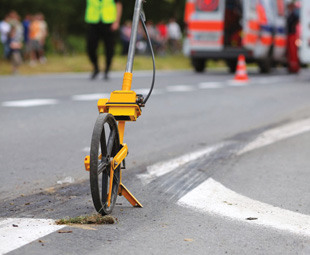Tackling road deaths through training?

“Woman killed, ten hurt in N1 bus crash” and “Dad, daughters die in Johannesburg crash” – headlines like these add to the horrifying death toll figures on South African roads.
We take a look at how training within the bus industry can help to tackle this blight
Many of the challenges that South Africa’s bus industry faces were highlighted in last month’s report back on this year’s Southern African Bus Operators Association (Saboa) conference and exhibition, with short-term service contracts and funding problems being the biggest culprits …
MD of Buscor, Norah Fakude, said it best: “The longest contract we’ve had since 2007 was 12 months. You can’t even finance a small car over that period, let alone a bus, yet we are expected to provide service. I don’t think our input is taken seriously. If it were, we would be given the comfort of longer-term contracts.”
She added: “Where do we get money to even maintain what we have? There is demand for extended services, but the subsidies don’t cover that. They are based on the kilometres we have signed for. Government doesn’t understand what operators are going through.”
Yet criticism arises quickly and fingers are pointed when accidents happen. “Half of the world’s road traffic deaths occur among motorcyclists (23 percent), pedestrians (22 percent) and cyclists (five percent) – thus “vulnerable road users” – with 31 percent of deaths among car occupants and the remaining 19 percent among unspecified road users,” said Carina Gauché during her presentation at this year’s event entitled: Establishing a Driver Training Academy for the Bus Industry.
Gauché is the organisational development manager at the Larimar Group, a diversified group of companies with interests in the passenger transport, freight transport, vehicle manufacturing, vehicle retail, engineering, manufacturing, financial services and property sectors.
So the bus industry isn’t the biggest culprit when it comes to these horrifying accident figures. “According to the World Health Organisation, road-traffic injuries caused an estimated 1,24 million deaths worldwide in the year 2010, slightly down from 1,26 million in 2000,” Gauché related.
“That means one person is killed every 25 seconds. Only 28 countries, representing seven percent of the world’s population, have adequate laws that address all five risk factors (speed, drink–driving, helmets, seat-belts and child restraints).”
She continued: “Over a third of road traffic deaths in low- and middle-income countries are among pedestrians and cyclists. However, less than 35 percent of low- and middle-income countries have policies in place to protect these road users.
“Middle-income countries have the highest annual road traffic fatality rates, at 20,1 per 100 000, while the rate in high-income countries is lowest, at 8,7 per 100 000.”
Gauché added that 80 percent of road-traffic deaths occur in middle-income countries, which account for 72 percent of the world’s population, but only 52 percent of the world’s registered vehicles. “This indicates that these countries bear a disproportionately high burden of road-traffic deaths relative to their level of motorisation,” she emphasised.
“There are large disparities in road-traffic death rates between regions. The risk of dying as a result of a road-traffic injury is highest in the African region (24,1 per 100 000 population), and lowest in the European region (10,3 per 100 000).”
The South African figures are devastating, as our country has 31,9 road fatalities per 100 000 inhabitants per year. When you look at road fatalities per 100 000 motor vehicles, this number rises to 156,4.
She said that Rob Handfield-Jones, MD of www.driving.co.za, ascribes South Africa’s high death toll to the failure of government to provide road safety leadership. “People only drive as badly as their governments allow them to. In countries such as the United States and the United Kingdom, it is socially unacceptable to be a bad driver. Government road safety systems in these countries are aimed at improving competence. South Africa, he believed, was the opposite.”
Handfield-Jones also said that as long as the key priority of law enforcers is revenue generation, rather than safety, South Africa’s road deaths will continue to mount. It added that licensing is a corrupt mess with probably half of all licences being issued fraudulently. “This creates a culture of bribery among drivers who forget that, when it comes to driving, a fake licence acquired by bribery can be deadly.”
Gauché added that Transport Minister Dipuo Peters has said: “Bribing traffic officers contributes to the lawlessness on South Africa’s roads. We are appealing to the moral conscience of our society. You contribute, through bribery, to allowing vehicles, that are supposed to transport people, to become weapons. You also contribute to allowing people to become murderers.”
Gauché looked at some of Australia’s initiatives (the country has 7,6 road fatalities per 100 000 motor vehicles) as examples of what we can do to change these behaviours. “Since record keeping commenced in 1925, there have been over 180 000 deaths on Australia’s roads,” she pointed out.
“However, road trauma levels have declined substantially over the last four decades, despite considerable population growth and a threefold increase in registered motor vehicles. During this period, the number of road deaths per year has fallen from 3 798 in 1970 to 1 153 in 2014.”
She continued: “Australia embarked on various road safety programmes. For example: from October 1, 2014, anyone losing their licence due to drunk driving will have an alcohol interlock fitted to any vehicle they drive.”
The Transport Accident Commission (TAC) – a Victorian government-owned organisation set up to pay for treatment and benefits for people injured in transport accidents, promote road safety and improve Victoria’s trauma system – also runs various awareness campaigns focusing on problematic driving behaviour.
“The footage used in these awareness campaigns is vivid and whenever crashes caused by the various behaviours/aspects increase, these short movies are aired on TV,” Gauché related. “Short movies are aired regularly to act as reminders and have a direct impact on reducing wrong behaviours among motorists, cyclists and pedestrians.”
She added: “Putco used some of these short movies a while ago in an accident awareness campaign. The number of crashes at one of its depots decreased notably. In order to remain effective, these short movies need to be aired regularly and content should be updated frequently.”
A driver training academy, within the bus industry, could make a world of difference. “Training is defined as teaching, or developing, in oneself or others, any skills and knowledge that relate to specific useful competencies,” Gauché emphasised.
“Training has specific goals of improving one’s capability, capacity, productivity and performance. In addition to the basic training required for a trade, occupation or profession, observers of the labour market recognise the need to continue training beyond initial qualifications: to maintain, upgrade and update skills throughout working life,” she added.
Internationally accredited training academies also hold various benefits: “Training is standardised across provinces and we can work towards a nationally accredited and accepted driver training standard,” said Gauché. “When a driver applicant presents a certificate from an accredited training academy, the employer will know that it is of a good standard and quality.”
Such institutions would also allow the industry to learn from other companies, and even countries, which methods work most effectively in training of drivers. “Considering the accident statistics across the various countries, we definitely need to consider South African drivers’ attitudes and typical driving behaviour when presenting training.”
Published by
Focus on Transport
focusmagsa




